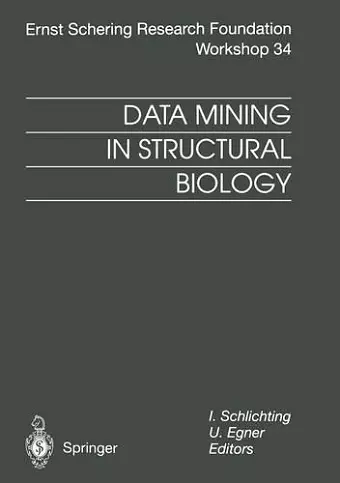Data Mining in Structural Biology
Signal Transduction and Beyond
I Schlichting editor U Egner editor
Format:Paperback
Publisher:Springer-Verlag Berlin and Heidelberg GmbH & Co. KG
Published:18th Apr '14
Should be back in stock very soon

Springer Book Archives
With the number of protein sequences without significant homology to well-known proteins increasing, the technique of structure-sequence compatibility (threading) is increasingly used to assign a function to a given protein fold.Structural biology is becoming a routine technique for structure de termination in pharmaceutical industries. The advances in molecular biology, crystal handling and data collection techniques, tunable syn chrotron radiation sources, and high-performance computing have all contributed to developments such as the production and expression of tailored protein domains, the use of the MAD (Multiple Anomalous Dispersion) method, and the collection of X-ray data from tiny crystals at cryogenic temperature. The number of protein structures deposited in the Protein Databank has increased tremendously over the last 3-4 years. Since 1997, more than 1,500 structures have been deposited each year, and during the first 7 months of this year, 1,500 protein structures were already deposited. The numerous initiatives in the field of "structural genomics" distributed all over the world have led to the development of techniques for high-throughput structure determina tion, thereby contributing to the increase in the determination of three dimensional protein structures. This structural information is being ex plored in various ways in the drug discovery process. It is not only used in structure-based drug design of new low-molecular-weight li gands, but also in the early stages of target validation and assessment. With the number of protein sequences without significant homology to well-known proteins increasing, the technique of structure-sequence compatibility (threading) is increasingly used to assign a function to a given protein fold.
ISBN: 9783662046470
Dimensions: unknown
Weight: unknown
209 pages
Softcover reprint of the original 1st ed. 2001